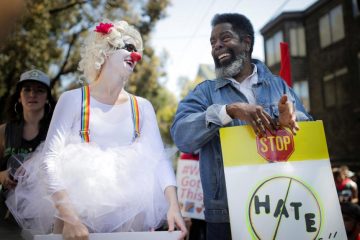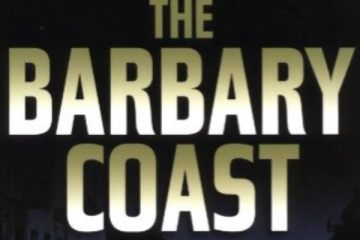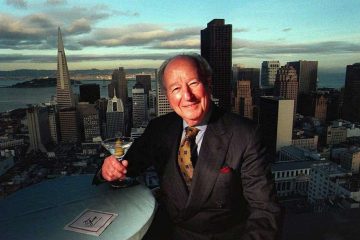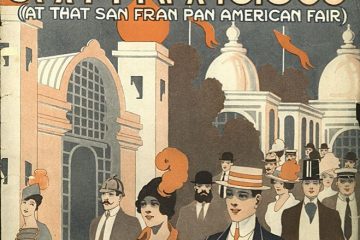Meet the Real SF Natives: 5 Ohlone Tribelets of SF and the Peninsula
San Francisco is an old, iron safe filled with gold, glory, disaster, and secrets. SFCentric History is a column, by SF writer V. Alexandra de F. Szoenyi, that digs in the vaults of local history and shares the sensational people, places, and things that rocked San Francisco.
Thanksgiving is this week, and Native American Heritage Month is November. In my on-going effort to write people of color back into history, and write the truth, I’d like to celebrate by shifting the focus away from the bullshit Thanksgiving narrative we’ve been fed, and put the focus back on the native peoples. Native peoples of San Francisco and the Peninsula, to be exact. You and three other generations of your family may have been born in SF, but the true OG natives are the Ohlone, the first permanent residents of the city, arriving in the area around 500 CE. It’s time to learn more about them.
Within the Ohlone, that numbered about 10,000 to 17,000 (1,500 were on the Peninsula, and 160-300 in San Francisco), there were about 50 tribelets (and within those sometimes different villages), or groups of villages, that spoke their own dialect of Ohlone, and were made up of about 50 to 500 people. Let’s take a look at five from San Francisco, and the immediate areas south of the city, on the SF Peninsula:
Yelamu
The Yelamu inhabited the most northern part of the San Francisco Peninsula, which includes what is now San Francisco. They lived in five villages–Amuctac (in Visitacion Valley), Chutchui (along Mission Creek, near Mission Dolores), Petlenuc (in the Presidio), Sitlintac (along Mission Creek), and Tubsinte (in Vistitaction Valley). The Yelamu, along with the other tribelets mentioned in this story, spoke Ramaytush, a dialect of the Ohlone language.
Pedro Alcantara, the son of a Yelamu mother and Cotegan father, was born in 1789 at Mission Dolores. He provided “the first and only recorded native San Francisco Peninsula vocabulary” to Adam Johnson at the mission in 1850. Alcantara himself was an Aramai from Pacifica.
Xigmacse (also known as Guimas), was the chief of the local Yelamu tribe when Mission Dolores was established in San Francisco. This makes him the city’s earliest known leader. The first four Yelamu Catholic converts were baptized at Mission Dolores between 1777 and 1779. Chamis was the very first, baptized on June 24, 1777 (became Francisco Moraga). He was also the first native to marry at Mission Dolores, when he wed Paszém on April 24, 1778. The Yelamu were among the natives who become the first “Mission Indians.”
Urebure
The name Buriburi may sound familiar, because of the Mexican land grant called Rancho Buri Buri (which extended from South San Francisco to the middle of Burlingame), the Buri Buri Elementary School in South San Francisco, or the Buri Buri neighborhood in that same city. All of that was named after the Urebure, a small tribe with a single village, who lived by the banks of the San Bruno Creek, and the southern tip of San Bruno Mountain.
Aramai
The Aramai were a small tribelet (perhaps less than 55 people), inhabiting the villages of Pruristac (on San Pedro Creek) and Timigtac (on Calera Creek), in present-day Pacifica). Intermarriage between tribes were common, with more than half of the children of Aramai parents being born and raised in the territory of another tribe.
Although born in Chiguan territory, Luciano Yagueche was the head man of Pruristac. Its village captain was Mossués, while Liquiique the village leader. In 1807, Pruristac’s Hilarion and George (Spanish baptismal names) were elected as alcades (acting as both mayors and magistrates).
Shalson (Written as Ssalson by the Spanish)
Photo: Muwekma Ohlone
The Shalson lived by San Mateo Creek, in the San Andreas Valley (in what is now San Mateo). There were three villages along the creek: Altahmo (also spelled as Altagmu, Alteitac, and Uturbe.
Chiguan
The Chiguan were about 40 or 50 people, who lived on the Pacific Coast of San Francisco Peninsula vicinity of Half Moon Bay. They had two villages: Ssatumnumo (now Princeton-by-the-Sea), and Chagunte (around Half Moon Bay). The Chiguan leader was Egidio Cancégmne, brother of Pruristac headman, Luciano Yagueche.









